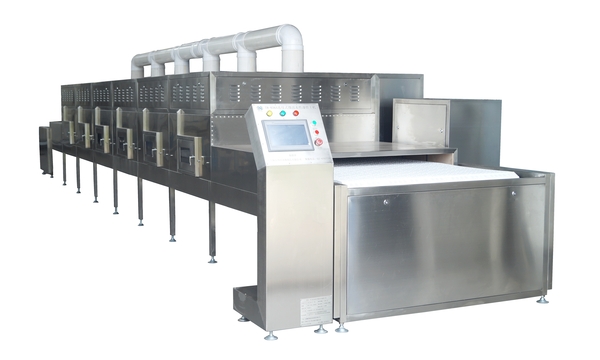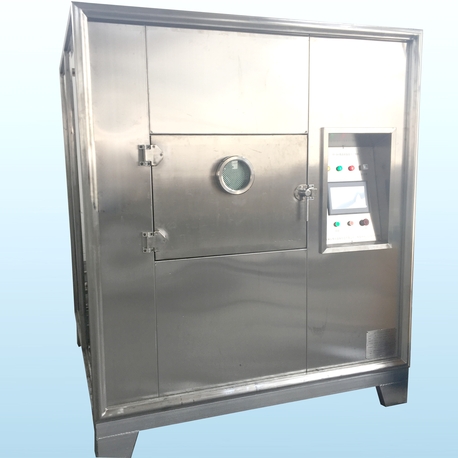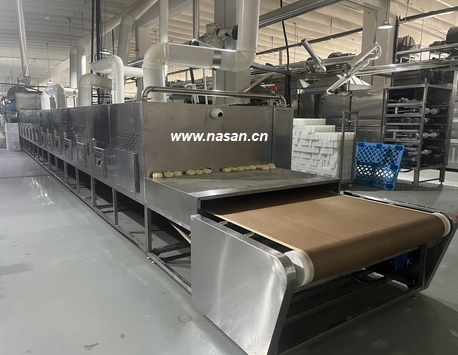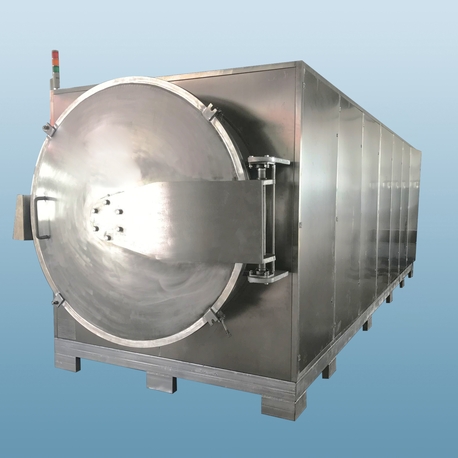Freeze drying, also known as lyophilization, is a sophisticated dehydration process that preserves perishable materials by removing moisture under low temperature and vacuum conditions. This technology is vital across numerous industries, from pharmaceuticals and biotechnology to food processing and historical preservation. At the heart of this process is freeze drying equipment, a term encompassing a range of machines designed to execute this delicate procedure. Whether you refer to it as a freeze dryer machine, a freeze drying machine, or lyophilization equipment, the core function remains the same: to sublime ice directly into vapor, leaving a stable, dry product with minimal damage to its structure.
Investing in the right equipment is a significant decision. The landscape of freeze dryer manufacturers is diverse, offering everything from small benchtop units for research labs to massive industrial systems for continuous production. Consequently, the freeze dryer price can vary dramatically, influenced by size, capacity, automation level, and intended application. This article delves into the world of freeze drying technology, exploring the different types of equipment, key considerations for purchase, and answers to frequently encountered problems.

What is a Freeze Dryer Machine and How Does It Work?
A freeze dryer machine is a precision instrument that performs a three-stage process: freezing, primary drying (sublimation), and secondary drying (desorption).
Freezing Stage: The product is first frozen to extremely low temperatures, typically between -30°C and -50°C. This crucial step solidifies the water content within the material. The freezing must be done rapidly to form small ice crystals, which helps preserve the product's cellular structure.
Primary Drying (Sublimation): After freezing, the chamber is placed under a high vacuum. Once the vacuum is sufficient, controlled heat is applied to the shelves. Under this low pressure, the frozen water sublimates—transitioning directly from a solid (ice) to a gas (vapor)—without passing through a liquid phase. The water vapor is then collected on a cold condenser coil or trap, which is maintained at an even lower temperature than the product.
Secondary Drying (Desorption): After the bulk of the ice has been removed, a secondary drying phase begins. The temperature is gradually raised to higher, albeit still mild, levels to break any physico-chemical bonds between the water molecules and the solid matrix. This step removes the remaining bound moisture (typically 1-5%), ensuring the product is thoroughly dry and stable for long-term storage.
The entire process is carefully controlled by a programmable logic controller (PLC) that manages shelf temperature, vacuum pressure, and cycle time to ensure optimal results for specific products.
Freeze Dryer Machine vs. Freeze Drying Machine: Is There a Difference?
In practical terms, the phrases "freeze dryer machine" and "freeze drying machine" are used interchangeably within the industry. Both refer to the complete system that performs the lyophilization process. There is no technical distinction between the two terms.
The choice of wording often comes down to regional preference or the specific naming conventions of different freeze dryer manufacturers. For example, one company might list its products as "Laboratory Freeze Dryers," while another might use "Lyophilizers" or "Freeze Drying Machines." When searching for equipment, it's beneficial to use both terms to ensure you are viewing the full spectrum of available options.
The Diverse Applications of Lyophilization Equipment
Lyophilization equipment is not a one-size-fits-all solution. Its design and scale are tailored to its intended application, which spans a wide array of fields:
Pharmaceuticals and Biotechnology: This is one of the largest application areas. Lyophilization is used to stabilize vaccines, antibiotics, proteins, enzymes, and other biological materials that are heat-sensitive. It extends their shelf life and allows for storage and transportation without refrigeration.
Food Industry: Freeze-dried food is popular for its long shelf life, light weight, and retention of nutritional value, flavor, and shape. Common examples include instant coffee, fruits for cereals and snacks, backpacking meals, and herbs.
Research and Development (R&D): Universities, government labs, and private R&D facilities use benchtop freeze dryer machines for product development, stability testing, and small-batch production of experimental compounds.
Tissue and Medical Specimen Preservation: Medical facilities use lyophilization to preserve tissues, blood plasma, and other specimens for later analysis or surgical use.
Historical and Archaeological Conservation: Water-damaged books, manuscripts, and artifacts can be salvaged using freeze drying, which prevents further deterioration and mold growth.
Choosing Among Reputable Freeze Dryer Manufacturers
Selecting the right manufacturer is as critical as choosing the right machine. The market includes well-established global leaders and smaller, specialized companies. Key factors to consider when evaluating freeze dryer manufacturers include:
Reputation and Experience: Look for manufacturers with a long track record and positive testimonials from users in your specific industry.
Compliance and Certification: For regulated industries like pharmaceuticals, ensure the equipment meets stringent standards such as cGMP (current Good Manufacturing Practice), FDA requirements, and has necessary CE or UL certifications.
Technical Support and Service: Reliable after-sales service, availability of spare parts, and knowledgeable technical support are invaluable. Ask about service contracts and response times.
Scalability: Consider whether the manufacturer can provide equipment that meets your current needs and can scale with your future growth, from R&D to pilot to full production.
Customization: Some projects require custom-designed lyophilization equipment. Check if the manufacturer offers engineering services to tailor the system to your unique process requirements.
Leading manufacturers often provide comprehensive resources, including validation support (IQ/OQ/PQ documentation), which is essential for regulated environments.

A Breakdown of Freeze Dryer Price Factors
The freeze dryer price is perhaps the most variable factor, ranging from a few thousand dollars for a small benchtop unit to several hundred thousand dollars for a large-scale industrial system. Understanding what influences the cost is key to budgeting effectively.
Scale and Capacity: This is the primary cost driver. Small pilot or R&D units are less expensive than large production-scale freeze drying machines with large shelf areas and high condenser capacities.
Automation and Control: Basic manual controls are cheaper. Systems with advanced PLCs, touchscreen interfaces, data logging, and recipe storage capabilities command a higher price but offer superior reproducibility and control.
Materials of Construction: Pharmaceutical-grade units requiring 316L stainless steel, sanitary fittings, and clean-in-place (CIP) or steam-in-place (SIP) capabilities are more expensive than industrial or laboratory models with less stringent material requirements.
Condenser Type and Capacity: The condenser is the component that captures the sublimated vapor. Units with larger condensers capable of handling high water loads are more costly. Options include coil condensers or more efficient plate condensers.
Shelving Type: Standard stationary shelves are standard. Options like stoppering shelves (for in-chamber vial stoppering), hydraulic or electric shelves for easier loading/unloading, and temperature-controlled shelves add to the cost.
Brand and Manufacturer: Equipment from top-tier manufacturers often carries a premium due to brand reputation, proven reliability, and comprehensive global service networks.
It is crucial to view the freeze dryer price as a total cost of ownership, considering not just the initial investment but also long-term energy consumption, maintenance, and potential downtime.
Common Problems with Freeze Drying Equipment and How to Solve Them
Even the most reliable freeze drying equipment can encounter issues. Being aware of common problems can help in troubleshooting and prevention.
1. Incomplete Drying or High Residual Moisture
Cause: Incorrect cycle parameters (too short a cycle, high shelf temperature too soon, insufficient vacuum), overloaded shelves, or too thick a product cake.
Solution: Optimize the freeze drying cycle recipe. Ensure the product is completely frozen before starting the vacuum. Check for vacuum leaks and ensure the condenser is cold enough. Reduce load density or cake thickness.
2. Product Melt-Back or Collapse
Cause: The product temperature exceeds its "collapse temperature" during primary drying. This can be due to excessive shelf heat, high chamber pressure, or a product with a naturally low collapse temperature.
Solution: Lower the shelf temperature during primary drying. Ensure the vacuum system is maintaining a sufficiently low pressure. For sensitive products, use a conservative, slow-and-steady heating ramp.
3. Poor Vacuum Level
Cause: The most common cause is a leak in the system. Other causes can include a malfunctioning vacuum pump, oil contamination in the pump, or a warm condenser that cannot effectively trap vapor.
Solution: Perform a pressure rise test to identify leaks. Check and tighten all fittings and gaskets. Service or replace the vacuum pump oil. Ensure the condenser has reached its target temperature before initiating the cycle.
4. Contamination of the Product or Chamber
Cause: Improper cleaning between batches, failure of the sterilizing system (if equipped), or cross-contamination from a previous run.
Solution: Follow a strict cleaning and sanitization protocol. For CIP/SIP systems, validate the sterilization cycles. Use tray systems to separate different products.
5. Condenser Icing or Failure
Cause: The refrigeration system that cools the condenser may have a fault, such as low refrigerant, a failing compressor, or a clogged filter drier.
Solution: Regular preventive maintenance on the refrigeration system is critical. Schedule routine checks of refrigerant levels and compressor function.
6. Loss of Data or Control System Errors
Cause: Software glitches, power surges, or hardware failure in the PLC.
Solution: Regularly back up cycle recipes and data. Use an uninterruptible power supply (UPS) to protect the control system from power fluctuations. Keep software firmware updated as recommended by the manufacturer.
Regular preventive maintenance, proper operator training, and a strong partnership with your equipment supplier are the best defenses against these common issues, ensuring your freeze dryer machine operates reliably for years to come.











